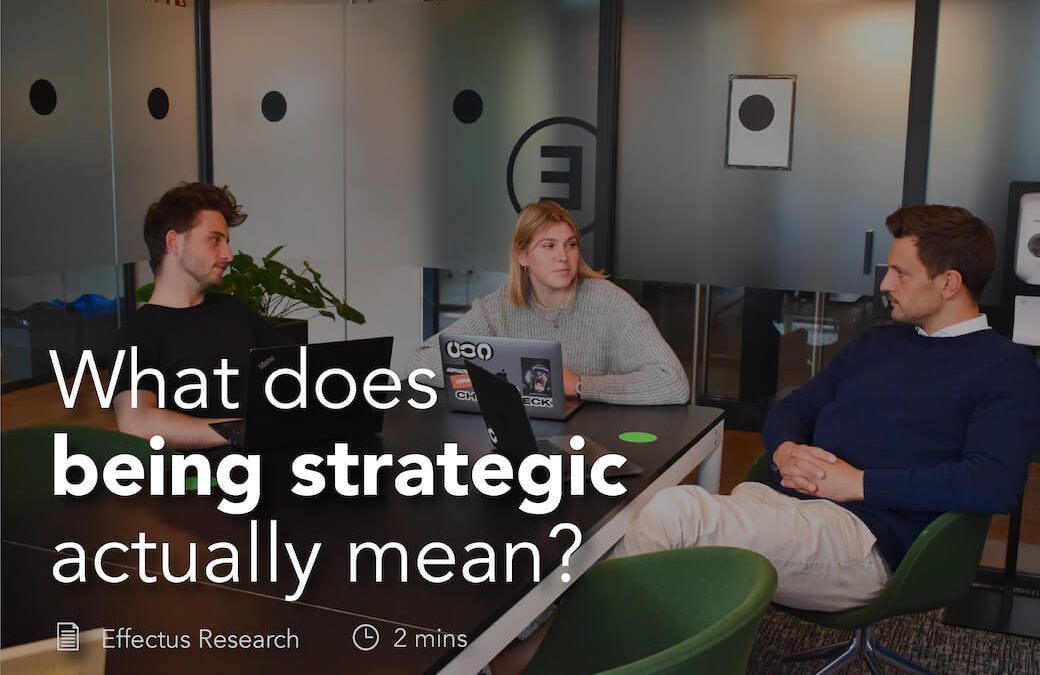‘Being strategic’, in an organizational context, means three things:
1. Thinking strategically
2. Acting strategically
3. Leading strategically

Thinking Strategically
Thinking strategically is what most people associated with ‘being strategic’. And it is true: cognition is central to being strategic. Strategic people think in strategic ways, for example: creatively, imaginatively, synthetically, intuitively, analogically, etc. They look beyond direct cause and effect and consider a wider set of variables, modalities, dynamics and timeframes. They ‘see’ impacts and options that others can’t, which enables them to plot a course of action that is non-obvious to most people and competitors.
However, being strategic involves more than just strategic thinking – it also requires action.
Acting Strategically
Acting in an organization involves communication, planning and team working. Strategy is a social practice, it involves information sharing, discussion, critical inquiry, feedback, and collective decision making & commitment. Ideas need to be transformed into plans and enacted through resource allocation and delivery.
Strategic action also involves the use of tools. Tools for research, data collection and analysis, and strategy implementation management. Being strategic requires skills in using these tools. It is empirical, not just intellectual.
Leading Strategically
Beyond thinking and doing, being strategic also involves values. What you want to achieve and why you want to achieve it are strategic in themselves. Natural goals, often labelled purpose, vision and values, are the foundation of being strategic. In organizations, strategic leaders know what they are trying to achieve and why. Ideally, these goals relate to common goods such as shared value creation, positive social and environmental impact, as well as personal development and reward for the individual and collective. Thinking and acting without values is pointless and non-strategic.
Leading strategically also involves creating the structure and culture that enable others to be strategic. In organizations that includes making sure ideas, capital and talent flow to opportunities that deliver the natural goals, cutting across business unit silos, geographic boundaries, and diversity constraints.
In summary, being strategic involves all three practices: thinking strategically, acting strategically and leading strategically. Once people master each of these practices highlighted above, they deserve to be called strategists.

